After successfully producing my first stainless steel burr style interlocking puzzle the Dirty Dozen, I was eager to try out another interlocking design in metal. And I got my inspiration from the wonderfully beautiful puzzle sculptures of Miguel Berrocal. And what incredible works of art they are.
A while back, I had designed a 3D Skull using Burr Tools. I planned to use this design but there was only one (major) problem; I could only fabricate the steel pieces by laser cutting. Which meant that I could only cut on flat sheets of steel, not in 3D shapes like those done by CNC machining. Given this limitation, I had to re-design my Skull entirely.
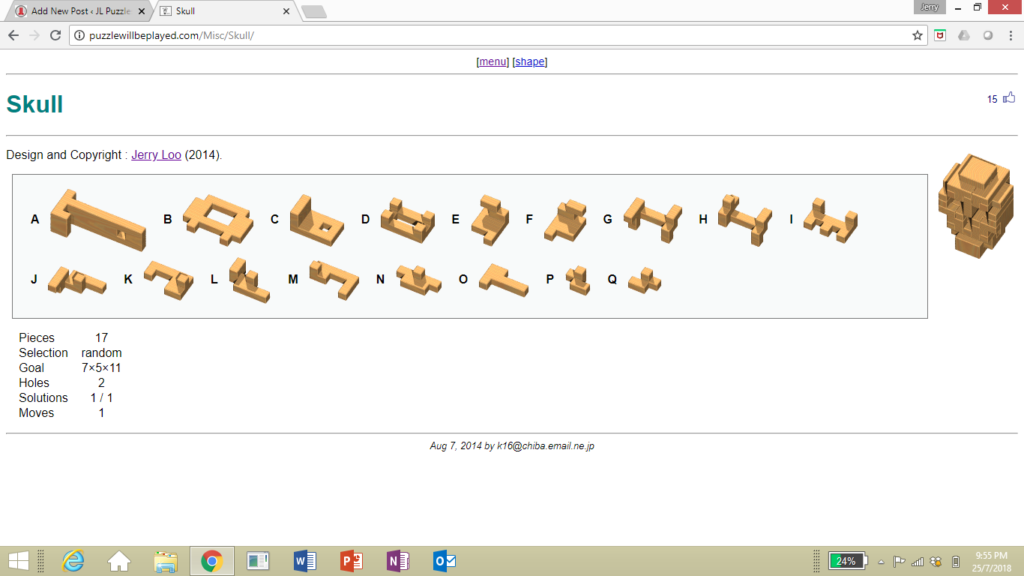
After a week or so of designing on and off, my ninth revision resulted in my “final” design. With the help of my friend and fellow puzzler Rex Perez who created the design in DWG format, I was ready to have Skull fabricated. The plan was to use 5mm thick 304 stainless steel like the Dirty Dozen. Completed and assembled, the puzzle would measure about 55mm x 35mm x 30mm. I took the opportunity to try out two other metal cutting vendors instead of the one who did the cutting for my Dirty Dozen. Files were emailed and payments made. A week later I received 25 loose pieces from each of the vendors.
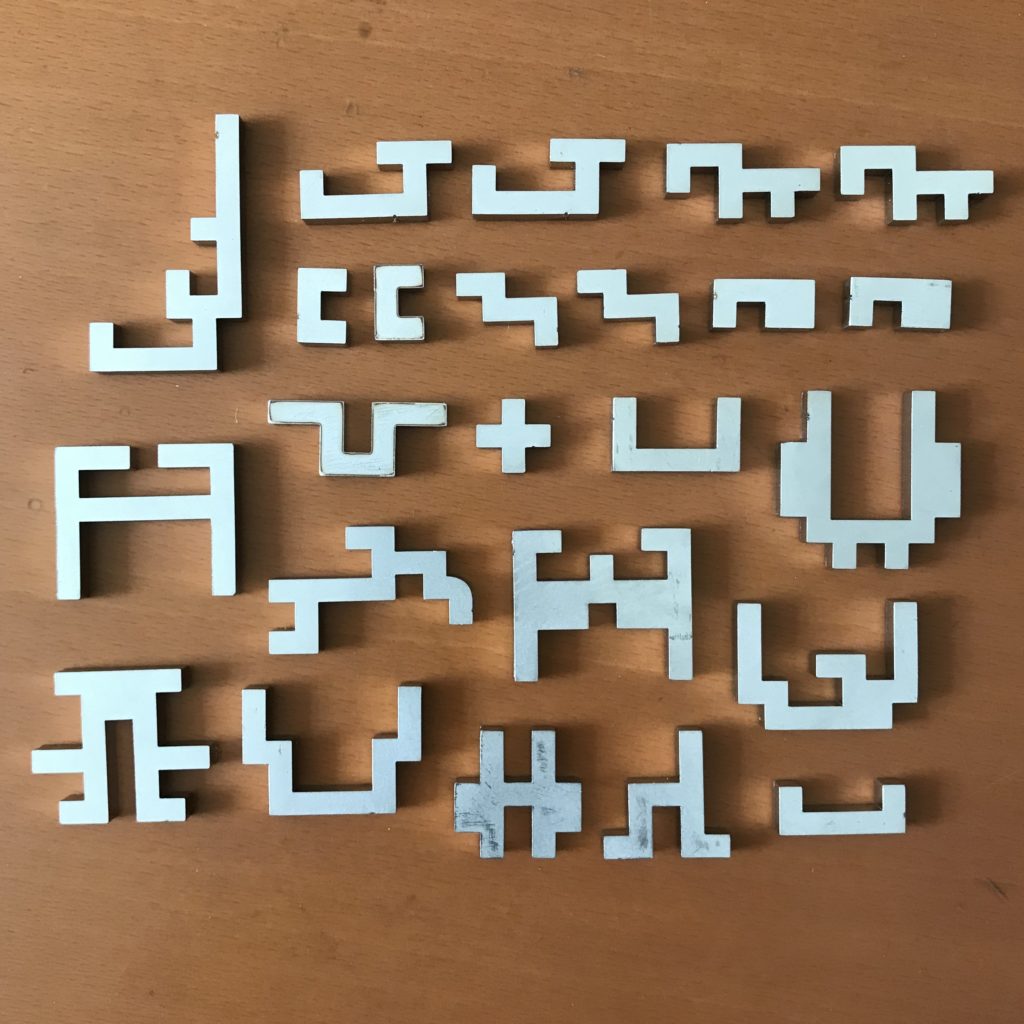

The 3-unit locking piece that goes right through and into the top of the skull
Skull with shaky bones
The first prototype from Vendor A was a dismal “failure”. The tolerance was so tight that the pieces could not fit at all. I could use a small file to sand down the pieces, but too much work. Wasted effort and money. The second Vendor B’s work is what you see here. All 25 pieces fit nicely, but with a bit too much free play between the pieces. A lot of shaking and rattling! Rex commented that the power output of the laser may have been too high. Thus “burning” away too much metal, making the notches and grooves bigger than intended. But at least when assembled, a semblance of a skull comes into play. You can recognize that the puzzle is a skull afterall. Another saving grace is that with the little 3-unit locking piece in place, none of the pieces will fall apart even when shaken hard.
As of this post, I have just finished design revision #14. A much improved design with re-shaping almost every piece. In fact its now been reduced to 24 pieces only. See the screen shot of the Burr Tools file shown here. In theory at least, the whole puzzle is better reinforced and supported and should not shake and rattle so much if the tolerances are improved. I will go for a second prototype. Have to explain to the fabricator how the pieces are supposed to work (they have no idea what the pieces are for!). Hope this one will turn out better.
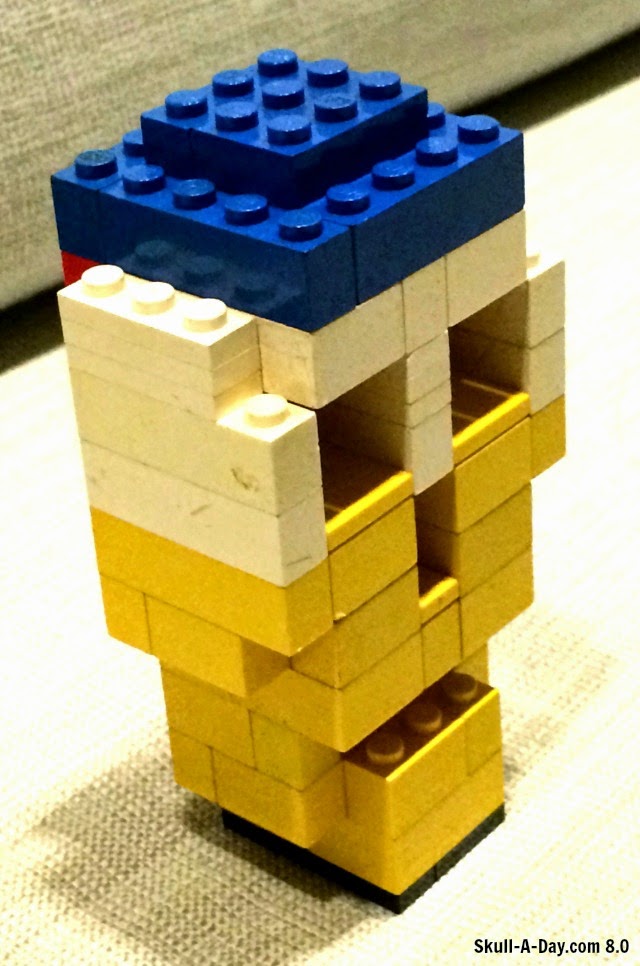
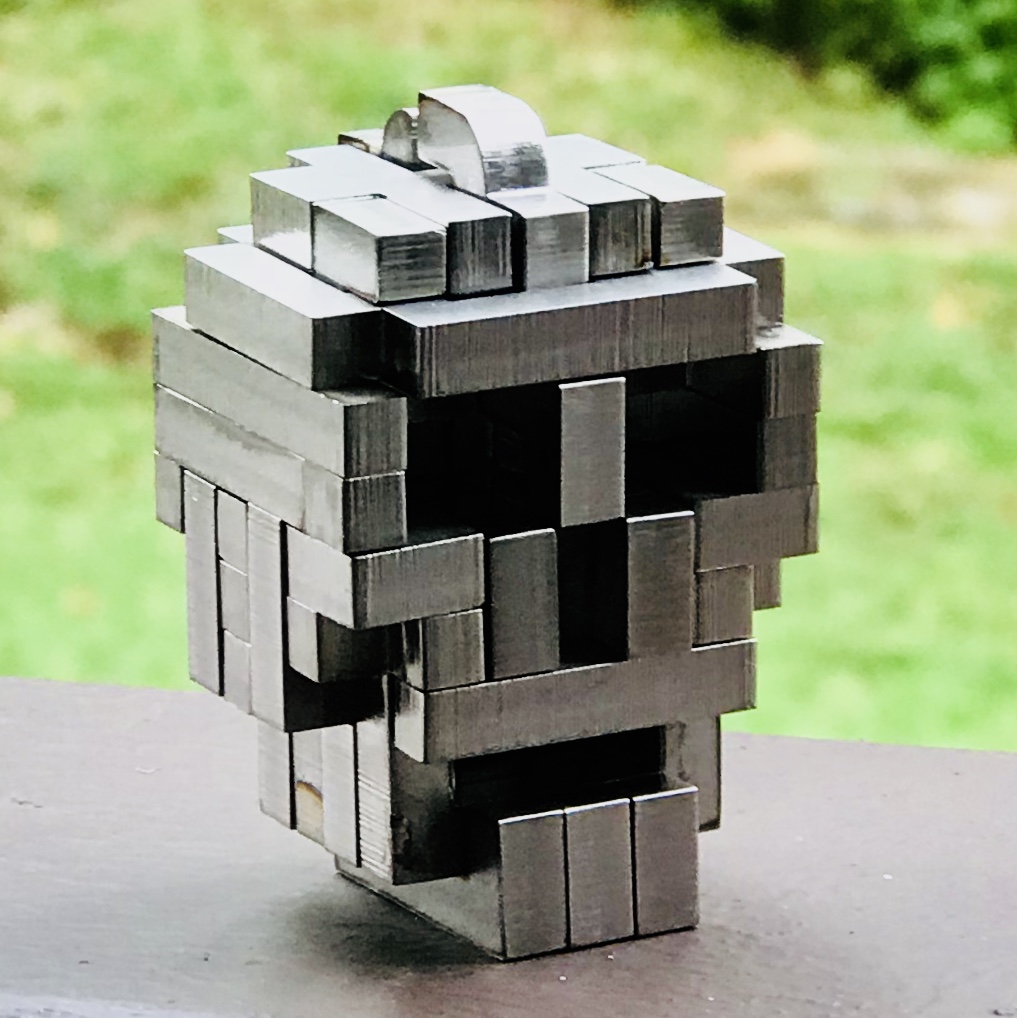
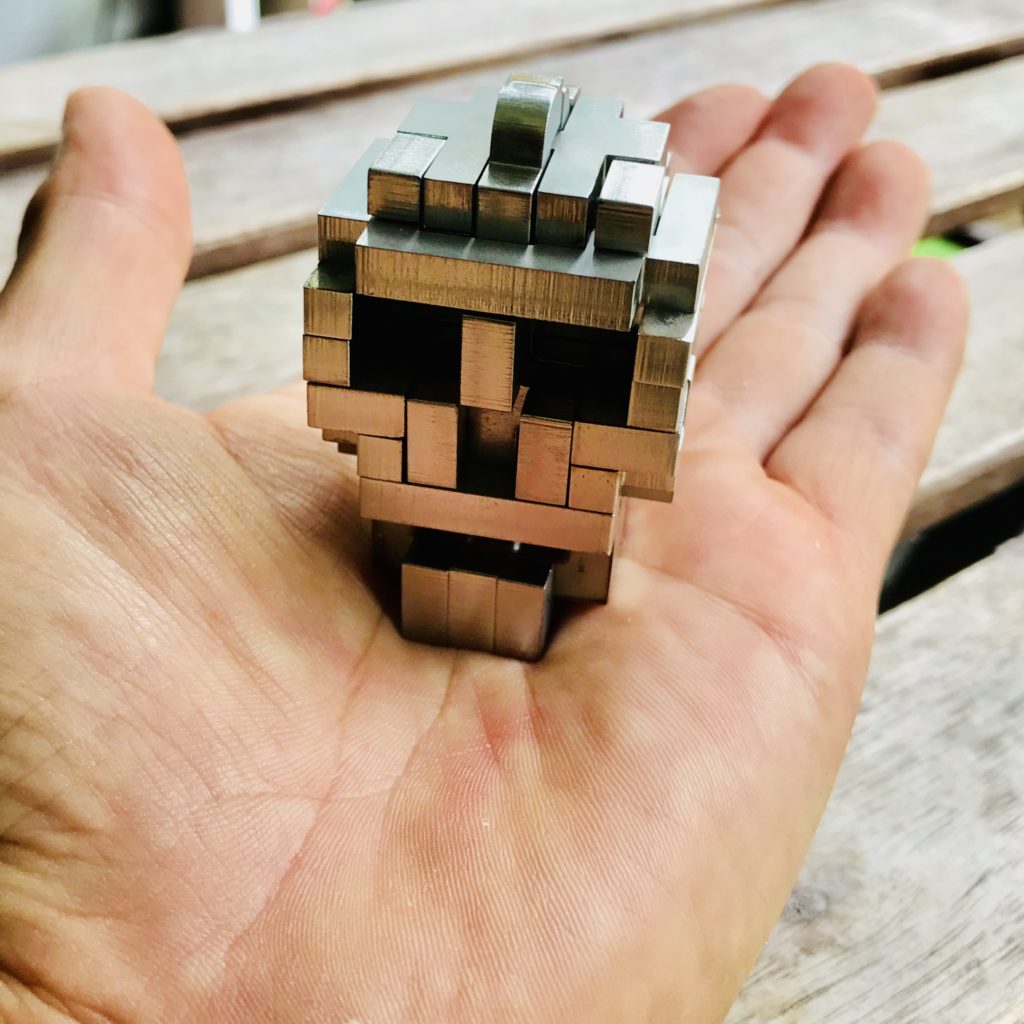
“Given this limitation, I had to re-design my Skull entirely.”
Sounds like a line from a sci-fi novel
Next: Cross-Bones (rattle bones?), to create and complete a pirate theme! Despite the loose tolerances, the Skull is still very attractive.
Thanks very much Tyler!
I’ve tried to make 3D puzzles by laser cutting, and the problem has always been that the material thickness varies considerably. I have used the laser cutting service called Ponoko, and they quote a tolerance for +/- 10% on most materials. This means a 5 mm thick material could be as thin as 4.5 mm or as thick as 5.5 mm!
If you actually own a laser cutter, you can measure the material before cutting, and obtain a perfect fit. The problem is the companies that produce material do not control the thickness to a high enough tolerance.
George, tolerance of -/+10% is IMHO way too high…if its on the side of being thinner, you can probably still get a working copy of a puzzle, although the pieces would be rather “loose”. The other challenge is the tolerance of the laser cut itself. Even if the thickness of the material is correct, if the cut of the laser exceeds the tolerance (by being on the smaller size), the pieces end up not fitting…as in one of my two steel prototypes above. The other puzzle the cut was a bit too big…hence the puzzle feels very loose!
I hear you! I’ve got several sheets of 3mm and 6 mm acrylic just waiting to be cut for two puzzle designs. My favourite local laser cutter is now retired — he was great because he and I would work together on getting the beam strength and track speed just right for each sheet of material. There is one local maker space club, but it is open just three hours a week, and those three hours coincide with curling during the curling season. There have been rumours that other maker spaces might open up locally and offer public membership, but nothing has developed yet. Since the tolerances have to be so precise, I have not contracted my designs to a cutting service — given the expense, I need to have some hands-on control of the process. So I wait…
Another idea might be to accept the loose structure, but design in a locking mechanism that clamps things down a little at the very end. Some alternate version of the locking piece perhaps. Ever do one of those 3D crystal puzzles? They use a screw mechanism that keeps them from falling apart as the final step. Something along those lines, conceptually at least. A work-around solution, but sometimes work-arounds work fine.
Mike, I did consider about an alternative way to lock down. But decided against it since I wanted the lock piece to come from one of the pieces from the puzzle without having to engineer something totally different.